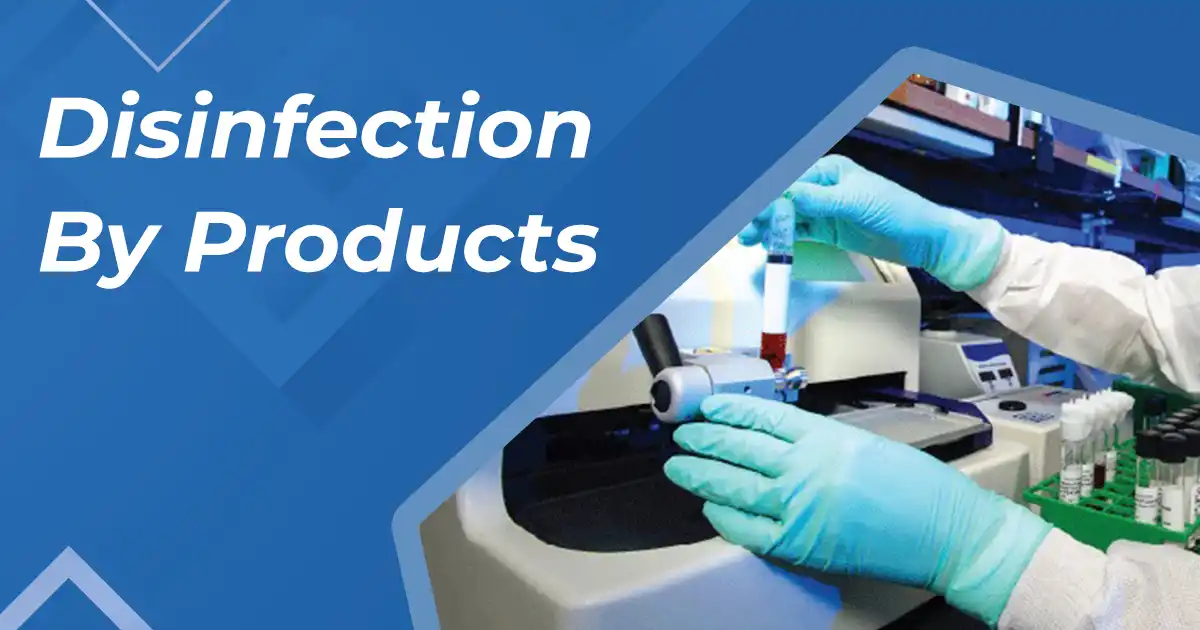Disinfection by Products
Posted on: January 18, 2022
Disinfection By Products


Recently there was a small write up on the presence of Bromate ions in packaged water and the need to check its level in packaged water. (see below)
Bromates are disinfection by products that have been well documented to be carcinogen in humans Presence of bromates in potable water has been in discussions for more than 15 years now, with limits being prescribed by many regulating authorities all over the world, in drinking water. However the surprising fact in India is we have not even reached standards to control DBP due to chlorination and not much is being done to enforce whatever limits have been prescribed, at least to begin with. World standards are far away when compared to Indian standards today and lots need to be addressed and done.
Before we talk about bromate as a DBP, a small mention on DBP due to chlorination is not out of context.
The Disinfectants/Disinfection By-Products Rule (D/DBP) (Proposed July 1994)
In the July 1994 proposal, EPA advised that it will be promulgating the D/DBP Rule in two stages:
Stage 1:
Requirements will be applicable to all systems that and treat surface waters and ground waters. Specific MCLs (maximum contaminant levels) were proposed for total THMs for total (of five) haloacetic acids (THAAS) and for bromate ion as follows:
TTHMs 80ug/L
THAAs 60 ug/L
Bromate Ion 10 ug/L
Stage 2:
The general intent is to lower all pertinent MCLS, .The following MCLs were proposed in July 1994 for Stage 2:
TTHMS 40 ug/L
THAAs 30 ug/L
Bromate Ion lower than 10 ug/L
Main precursors of THM are: Humic Acids, Resorcinol, Anilin, Phenols and Poly-phenols, Benzoïc Acid Salicylic Aldehyde .These precursors are easily removed and should not be allowed to be converted to THMs . Once the THMs are formed, it becomes very difficult to remove them from the solution. In most cases, the culprit is Chlorine used as a pre disinfectant
How to prevent formation of THMs
Water treatment experts have found that the use of Ozone, prior to Chlorine Dioxide is one sure method. It is used all over Europe. Unlike Chlorine – Ozone, during treatment, reduces the values of the spectral absorption coefficient .(UV-extinction at 254 nm) without forming any THMs. THMs, possibly present in the water, are also decomposed
.THMs in Drinking Water
THM are molecules produced from reaction of Chlorine (Pre-chlorination – Post-chlorination) with some organic matters called precursors of THM.THM’s precursors are organic molecules which may react with Chlorine (Pre-chlorination – Post chlorination) to produce THM. THMs have potential adverse health effects. One out of 1,00,000 people drinking chlorinated water for a period of more than 10 years develops rectal or colon cancer. In India, incidence of rectal and colon cancers are the highest when compared to other cancers such as lung, oral and breast cancers. The incidence of rectal and colon cancers are lower in European countries where controls are strictly adhered on the minimum concentration levels of these disinfection by-products. THMs, once produced, are difficult to remove. We have to, therefore, destroy the precursors.
Bromates as DBP :
Bromates are not naturally present in waters .These are caused by oxidation of bromide ion containing water .In most parts of the world ozonation is a major disinfection step, normally replacing pre chlorination step . Bromide containing waters , when ozonated , can result in bromate formation , when the ozone converts the bromide ions to bromate during ozonation. The acceptable bromate ion levels in water all over the world is less than 10 micro grams/litre . These norms are strictly followed not only in the US , but also in EU , Japan and China .
Bromides are also introduced into the water as impurities and Sodium Hypochlorite is used for disinfections. Contaminations can sometimes exceed 2 mg/litre !!!
How is Bromate formed during ozonation?
The bromate formation has two kinds of path ways. These have been well documented by scientists.
Pathway 1 consists of oxidation of bromide ion to hypo-bromous ion by ozone and this hypo-bromous ion being further oxidised by ozone to Bromate ions.
Pathway 2 is more complicated and involves OH radicals. When ozone is dissolved in water , it forms both molecular ozone as well as OH free radicals . These OH free radicals, oxidise bromide ions to oxy bromide radicals which is further converted to bromite ions and subsequently to Bromate ions by both molecular ozone and OH free radicals.
Factors that influence bromate formation during ozonation:
Many factors need to be considered if Bromate formation is to be minimised.
- pH of the water : pH influences bromate formation. It has been found that the formation of bromates are high when the pH is alkaline rather than an acidic pH . This is because at alkaline pH , there is a high concentration of OH free radicals during ozonation . Ozonation under acidic/neutral pH is the first priority
- Ozone dose : The formation of bromate ions is directly proportional to the ozone dose . The ozone dose need to be decided upon a thorough study of the raw water analysis so that you dose only what ozone is required. The ozone dose is normally decided based on the action required. During pre ozonation (1ppm ozone dose), the formation of bromates are insignificants when compared to the formation of THMs when pre chlorination is used . However because of strict cryptosporidium and giardia standards often multiple location ozonation is suggested (inter-ozonation) where the ozone dose is around 2-4 ppm . This could be a contributory factor. But water treatment authorities tend to weigh the health benefits and balance the risks and benefits of drinking water disinfection. Studies have shown that prevention of cryptosporidiosis and acute gastro enteritis outweighs human loss due to premature death due to renal failure due to Bromate ions
- Natural Organic Matter and Inorganic carbon content of the water: This is very important factor as it has been found that Natural organic Matter ( NOM ) such as humic acid etc and inorganic carbon have direct bearing on the formation of bromate ion from bromides . Organic radical generation by decomposition of NOM appears to enhance bromate formation. These are most often difficult to keep track during ozonation
- Temperature of water: Often determines amount of ozone required. Studies have revealed that bromate formation has found to increase during summer when the ozone doses are increased
How can Bromate ions be removed from water?
Bromates once formed are very difficult to remove. Many technologies have been unsuccessfully tried. Like THMs they are best prevented from forming by taking precautions while disinfecting
- BAC ( Bacteriologically Activated Carbon filters )
- Reaction of water with high doses of ferrous iron ( above 10 ppm)
- UV lamps ( dose required can exceed 100 times that required for disinfection )
- Ion exchange resins , RO and UF technology
What is Bromate Toxicity?
Bromate toxicity in humans has been in discussion for over a decade now. There is no doubt that Bromates are carcinogenic in Humans and numerous studies have been conducted. Most of these studies are limited to experimental animals such as rats . The only issue is that there is no sufficient data on the long term exposure in human beings. How bromates cause cancer is also unknown. All data have been derived out of extrapolation models. The risk of bromate exposure by drinking water as DBP is found to be 120-180 micrograms per day
Bromates in packaged water:
The only source of bromide could be from raw water or from contamination from chlorine product used. The ozone doses need to be reduced to less than 2 ppm ozone per M3, compared to 3-4 ppm ozone is that being used today ( international standards are between 1- 2 ppm ) . More over major packaged water firms use DM/RO/UF technology which has the capability to remove bromide ions before it is subjected to ozonation.
Conclusions
Irrespective of what is being discussed on Bromate toxicity, it is undoubtedly clear that using ozone and chlorine combinations in drinking water disinfections is a safe method to reduce the THMs formed and thereby reduces the toxicity of THMs and millions of people have been benefited by this technology. Fire is very helpful to us. We use it in our everyday lives .But fire also hurts, destroys, and kills. But aren’t we still using fire? The same analogy should also be applied to ozone. Designed and used well, ozone is still a very safe and useful substance.

Shreyas Baratharaj | Director
Sheryas Barathraj has over 15 years of experience in municipal and industrial ozone applications. He has worked on some of the world’s largest ozone installations, with key interests in advanced oxidation, chemical synthesis, pharmaceutical water systems, and municipal drinking water treatment. LinkedIn Bio ›


